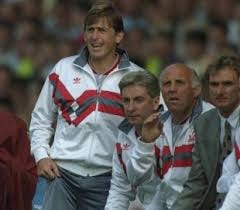When Sir Kenny's return (well he wasn’t knighted yet, technically, though he had always ranked somewhat higher than mere knight amongst Kopites) as manager was announced in January 2011, I like many was unsure whether it would be the right move. I wondered whether it would be regressive, whether he was still in touch with the latest developments in the ever-evolving football world. Not least, that thing called the Premier League (in which a certain red-nosed manager’s team had dominated) had landed since he was last our boss. There was also conjecture about whether Kenny’s appointment would or should be merely as a stop-gap or something more permanent.
Since Sir Kenny had last managed us, he’d experienced a lot, not least winning the league with Blackburn and not doing so well at Celtic and Newcastle. But if a man hasn’t learnt anything for the last 20 years, you wonder what he’s been doing all that time. (And that’s the last time I’ll mention Roy Hodgson).
Also, if the man had changed since he was last in charge, what about the club? How many convulsions had that gone through in the intervening years, especially recently? Having returned under Rafa in his former ambassadorial and youth development capacity, Kenny had had a ringside seat for much of it. It’s not as if he had come in from the outside into unfamilar territory.
But at the same time the announcement brought an instinctive surge of elation, a lightening of the burden, and a sense of having my connection with my club back, all tinged with relief that the former postholder had left and taken his manacles with him. I recall thinking that if evoking memories of what Liverpool once were is one thing, finding belief in what we could be again under Sir Kenny, in a totally different era, quite another.
Most of all, we had his first spell as manager to draw back upon, to find comfort and much cause for optimism. Because much, though not all, of King Kenny’s first reign had no grey areas about it.
There is one striking and very relevant similarity between his appointment in 2011 and his first back in 1985. On both occasions he arrived in the manager's chair with the club in disarray, albeit for vastly different reasons and prevailing background circumstances. For his second tenure he appeared in the trailing comet of Hicks and Gillett’s disastrous ownership, of Rafa’s sacking, of court cases and near-insolvency, and then of - Roy Hodgson. Kenny came in as the unification candidate, and who else had the stature to do that at that time?
Kenny’s first reign was more or less book-ended by the terrible twin H-bombs of Liverpool’s history, as Paul Tomkins memorably described them, of Heysel and Hillsborough. although starting straight after the smoking ruins of the Heysel Stadium,Although he continued for a while post-Hillsborough, it would be difficult not to conclude that it was Hillsborough that ended his first managerial career at Liverpool. Perhaps that’s why he still felt he had unfinished business, spurring him on, even beyond the disappointment of not being considered for the job when Roy Hodgson was being appointed.
Keep reading with a 7-day free trial
Subscribe to Dynasty – The Tomkins Times to keep reading this post and get 7 days of free access to the full post archives.




